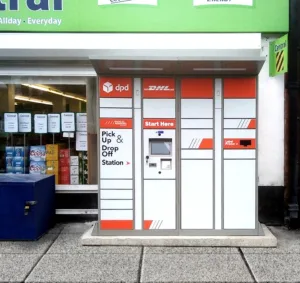By Rob Delijani, Senior Director of Growth Strategy, Wunderkind (formerly BounceX)
The media, analysts, and pundits are all telling us what will happen in retail during the next three months, which is basically that they don’t really know. With everything that has been going on this year, the needle is clearly no longer pointing only to magnetic north.
However, there is some good news, which is that store retail sales have recovered and online remains buoyed as lockdown has eased. Despite the fact that there doesn’t appear to be any absolute source of authority on the true picture, it is clear that consumers are making plans to shop from here to Christmas.
What we did is undertake some research that looked at last year’s data as a base line for normal and then looked at how people have started to shop online since the pandemic. We then also looked ahead to how future events may impact peak performance. We brought all this insight together and developed seven things you can do, using your data, to create effective peak marketing campaigns.
- Every day is a new day
Campaigns forBlack Friday and Cyber Monday should be set up to recognise when shoppers at every stage of the buying funnel are on your site at a specific time. Looking at our data, we noticed that peak browsing and peak conversion times occurred at different, and very specific, parts of each day.
So, take advantage of the fact that on Black Friday, peak onsite traffic times for retailers occurred in the early morning to afternoon, while on Cyber Monday it occurred much later at night.
2. Reacting to traffic types requires different messaging
But instead of guessing what customers will respond to, use a powerful onsite identification solution to help you understand who each visitor is and what actions they will take while they are there. You can then use this solution to help you create different segments of customers based on where they are in your own site’s purchasing funnel.
This could include everything from top-of-funnel segments like homepage bouncers to bottom-of-funnel segments such as product or cart-page abandoners. Once this is done you can then refine your messaging to make sure you’re creating a relevant and enjoyable marketing experience for your customers.
3. Take more advantage of the channels you own and control
Rather than overspend through paid media, the price of which always goes up during peak, focus on doing a better job through email and SMS. Each of these channels are extremely important to retailers. In fact, last year, our data showed that retailers were driving almost 25% of their Black Friday and Cyber Monday revenue through email alone.
Also consider combining your email marketing with your SMS campaigns. Doing this ensures that you can reach consumers wherever they go online, across desktop and mobile. In fact, from Black Friday through Cyber Monday in 2019, our data showed that more users visited websites and converted on mobile devices than they did on desktop.
4. Personalise where you have a personal connection
Everyone wants to personalise their emails to increase conversions, basket sizes, and lifetime value. But, if the target list is full of errors, out of date, or based on people who haven’t engaged with your brand in years, then the investment will be wasted.
In the lead up to Christmas, you need to focus on cleaning up your list and adding in new, engaged users who will be likely to interact with your brand during high-sales periods. The best way to do this is to ensure you have effective email and SMS opt-in technology running on your site. This will ensure your lists stay fresh and simultaneously continue to grow.
5. Keep discounting
Digital marketing and owned-channel marketing should be viewed as performance channels not cost-centres. Concerns over hurting brand equity or losing margin are not borne out in our research. For the retailers who did offer discounting in their promotional strategy, we’re able to drive over 5% of their total annual revenue on average through the Black Friday and Cyber Monday weekend.
That’s nearly 5 times more than a weekend from January – October would see. On the other hand, retailers who didn’t discount, saw only 2.6% of their annual revenue over the same time period.
6. Be sensitive to all that your customers are facing right now
Big events impact shopping behaviour, which is why retailers need to be sensitive to this in their marketing by showing empathy rather than chasing the sale. The so-called new normal is still many months off and may never in fact arrive, so building sensitivity into your language and timing will help you stand out.
7. Above all, keep mobile first in mind throughout the Christmas trading period
Ideally, these days, you should have a mobile-first strategy when it comes to Peak marketing, everything from your email sends, to the browsing experience, and even the check-out process of your site needs to be focused on your mobile clients first and foremost.
Even where desktop traffic rises as customers go back to work on Cyber Monday, the truth is, the vast majority of customers are using their smartphones to shop online.










